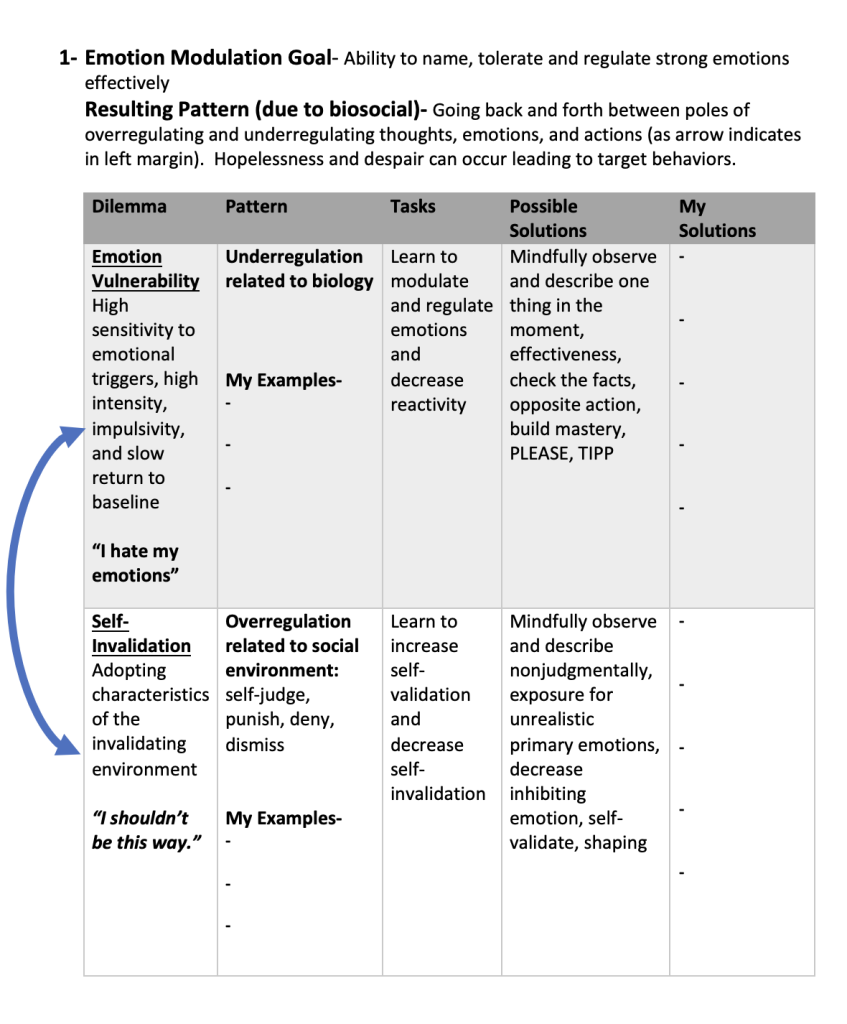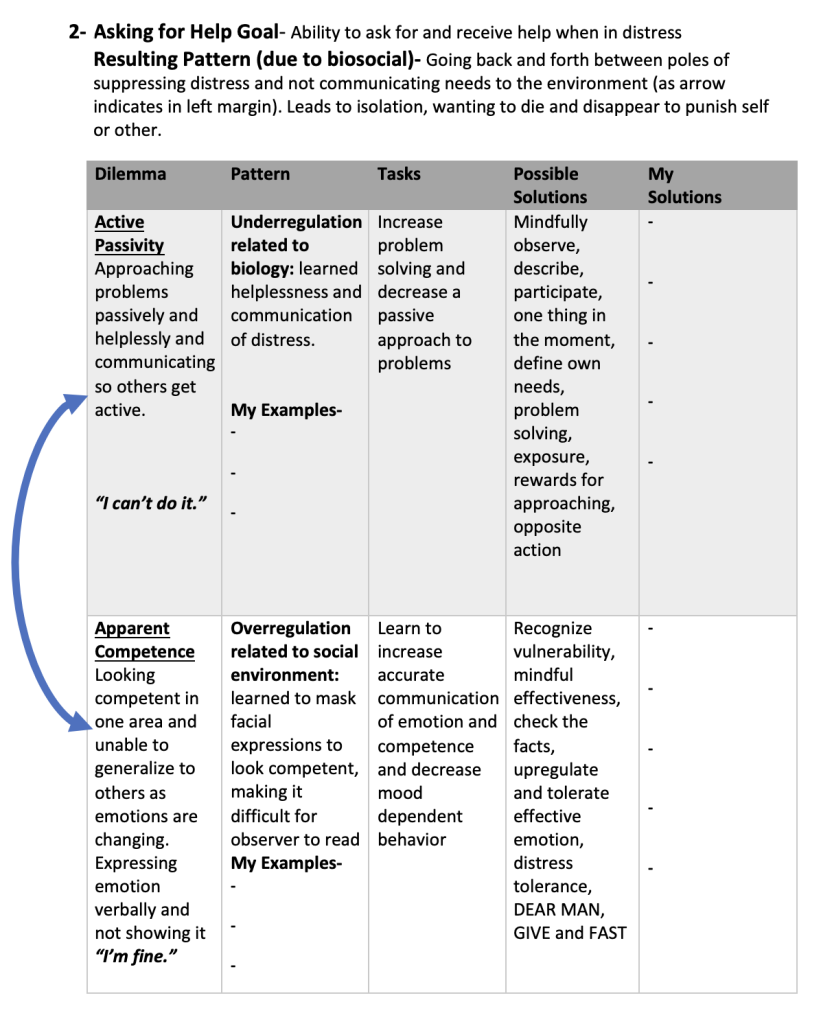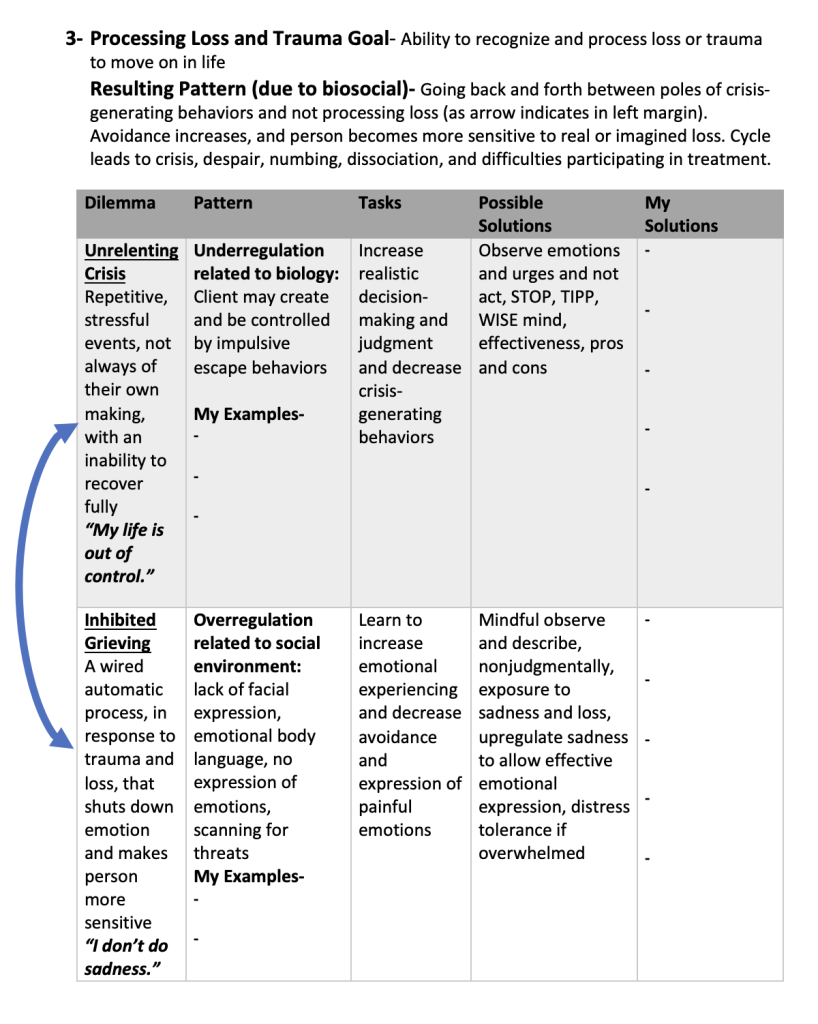This feature by Donna Pattie, MSW, LICSW is Part 2 of 2 in a series about identifying and treating dialectical dilemmas in DBT. In part one, we looked at the biosocial model and development of dialectical dilemmas laid out by Marsha Linehan (1993) and Charlie Swenson (2016). Here in part two, we will now look at a worksheet for clients and providers to identify dialectical dilemmas and possible solutions to reduce behaviors getting in the way of their life goals.



A young woman I am treating in standard DBT and DBT PE (Prolonged Exposure) is nearing the end of treatment. At the outset, we identified target behaviors of suicidal ideation, anger outbursts, crying outbursts, avoidance of work tasks and dissociation. Together with ongoing case formulation and behavior chains, we discovered that she had all 6 dialectical dilemmas. We used this worksheet to map patterns and developed a solution plan.
For example, while doing a behavior chain on suicidal ideation when describing an event, which to most would elicit sadness, she smiled. Knowing her pattern of inhibited grieving and unrelenting crisis, I brought attention to her smiling as possible overregulation of sadness and coached her to stop smiling, relax her face and body, and take a sad position. The tears came flowing.
In doing this brief exposure, she recalled that she was given stickers as a child to not cry. She learned to overregulate sadness. In session, she learned that it was okay to allow sadness and had strategies to regulate should the sadness get overwhelming. While doing DBT PE, we watched for overregulating and underregulating and applied solutions.
Just this past week she said she cannot believe she is no longer suicidal, having anger or crying outbursts, dissociates less and is able to identify and tolerate emotions, especially sadness and shame. She feels ready to graduate and continue her exposure lifestyle, now able to modulate emotion, skillfully ask for what she needs and process trauma and loss with new learning. Herein lies the reward for us both!
For further reading, check out this blog from Christine Dunkley, DClinP on “Teaching the GIVE Skills.”
Donna Pattie, MSW, LICSW is the DBT Trainer and Consultant for 15 DBT outpatient teams at Nystrom & Associates, Ltd across the state of MN. Donna is a Linehan Board Certified DBT therapist and DBT Team Lead in New Brighton, MN for a Linehan Board Program Certified Team. Read her full bio here.
Disclaimer: The Behavioral Tech Institute blog is designed to facilitate the sharing of ideas, experiences, and insights related to Dialectical Behavior Therapy (DBT). The content and views expressed in the articles, comments, and linked resources are those of the individual authors and do not necessarily reflect the views, policies, or positions of Behavioral Tech Institute or staff. Content is provided for information and discussion purposes only and is not intended as professional advice. Contributors to the Behavioral Tech Institute blog are independent, and their participation does not represent an endorsement by Behavioral Tech Institute.

